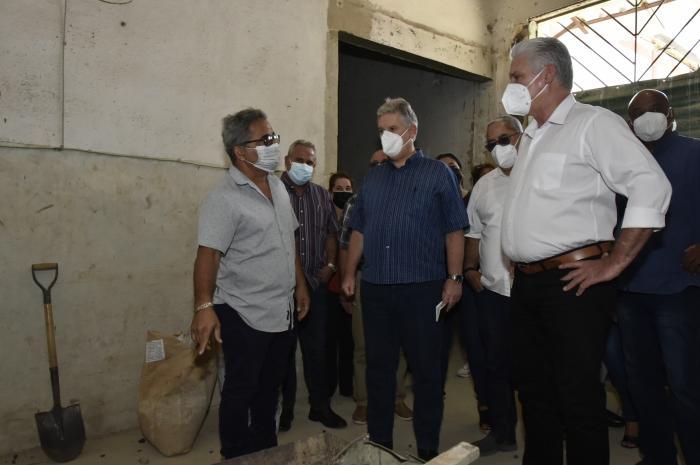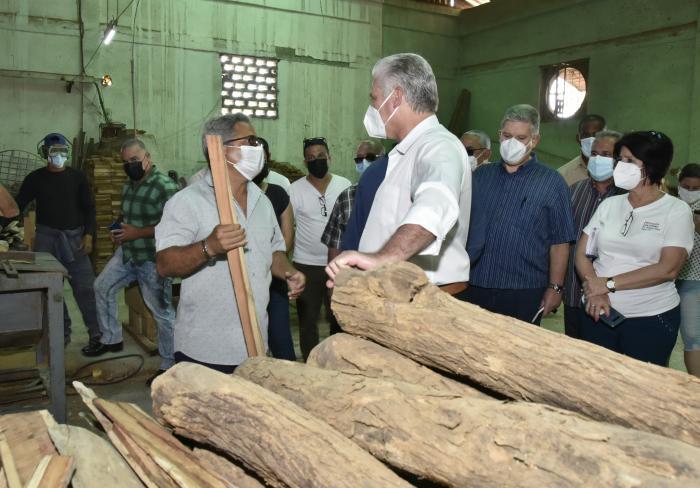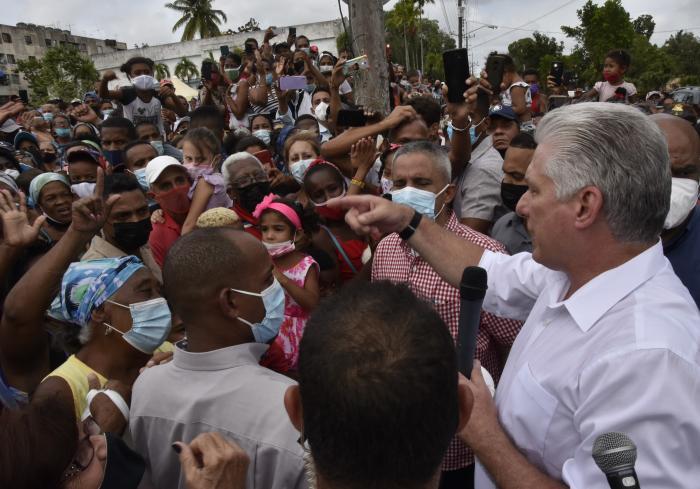
What occurred in the Havana neighborhood of Reparto Eléctrico, Thursday afternoon, was, as one resident described it, tremendous. Accompanied by several ministers and capital city authorities, Communist Party of Cuba First Secretary and President of the Republic Miguel Díaz-Canel Bermúdez arrived as part of the fourth national government visit to the province of Havana.
The people of this People's Council, a territory of 12.5 square kilometers with more than 28,000 inhabitants within the municipality of Arroyo Naranjo, who are immersed in a transformation process, took to the streets.
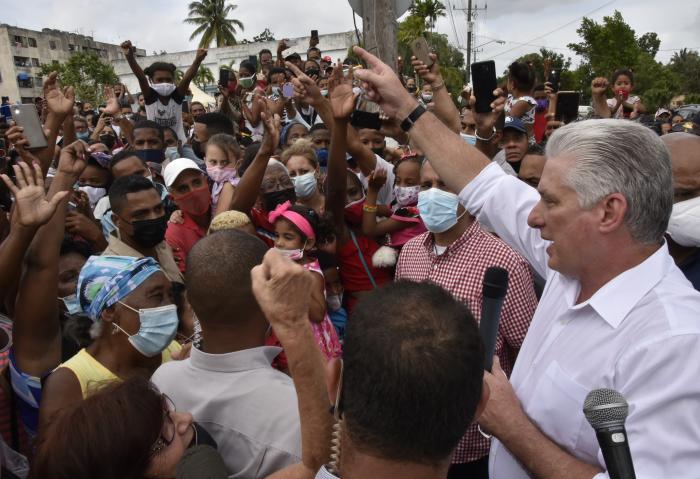
Children and adolescents, enjoying their spring break from school, were the majority among a very diverse group that chanted cheers for Fidel, for May Day, for our heroic doctors, as well as, "Long live Díaz-Canel!" But the President, while shaking as many hands as he could, insisted: "No, not me, long live the Revolution," and asked the crowd about popular participation and control of community transformation projects.
The morning began in the municipality of Cotorro, in the workshops of the G'Obras Construction Cooperative (founded in February 2015) much appreciated for its mortars produced with 100% Cuban raw materials and its carpentry crafted with marabú, an invasive, woody shrub.
In the area of an old textile factory, where 14 bays have been remodeled, architect Pedro Fuentes Labrada, president of the 82-member cooperative, shared some of their accomplishments, which include the capital repair of 151 guest rooms at the Riviera Hotel and the Beijing restaurant.
Another architect, Yuri Pérez Labrada, vice president of the cooperative, added that their work is certified by the relevant laboratories and includes a significant percentage of recycled materials, contributing to the substitution of imports.
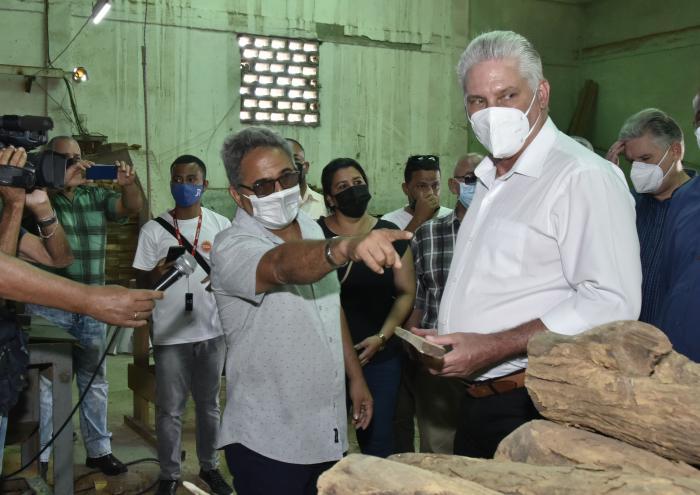
Visited as well was the Tropical Livestock Improvement Research Center (Cimagt) in Loma de Tierra, also in Cotorro, where a Batista dictatorship rural guard barracks was located before the triumph of the Revolution. The Center is the only one of its kind on the island, founded on the initiative of Fidel, a consistent promoter of these studies. At the site, Díaz-Canel inquired about the concrete application of science in livestock ranching and asked how such laudable scientific work could be translated into increased growth of the nation’s livestock population.
With 140 workers, 40 under 35 years of age, and 17 doctors of science, Cimagt is a national reference center for genetic evaluations and studies, assisted reproduction (one of the most demanded services), in vitro fertilization and embryo transfer, with five extension stations for this purpose recently renovated.
